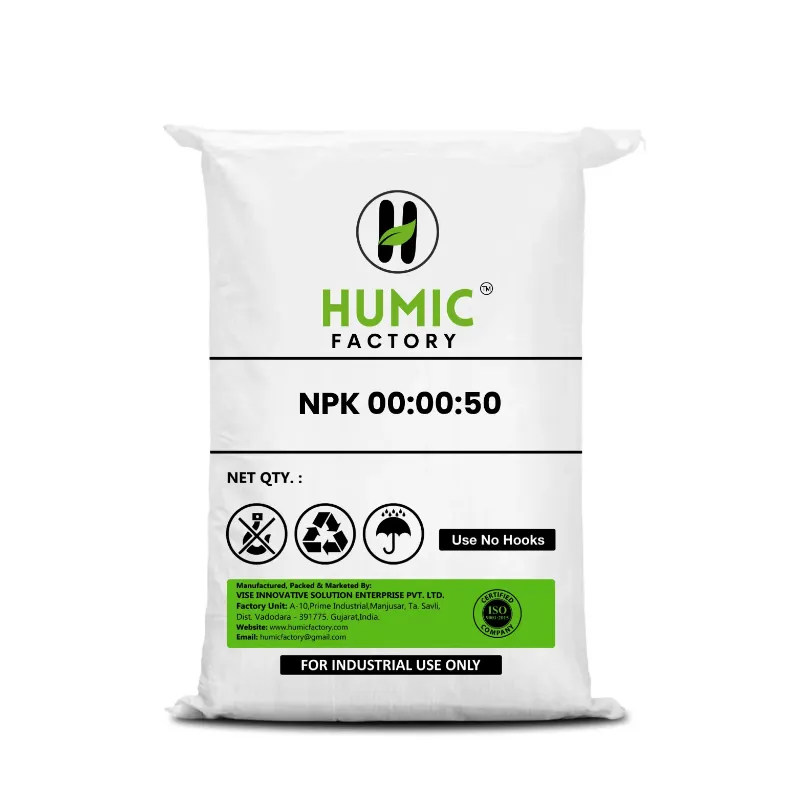Biofertilizers are essential for enhancing soil health and improving crop productivity. They offer a natural alternative to chemical fertilizers by boosting soil fertility and promoting sustainable agricultural practices. Humic Factory provides a range of biofertilizers designed to support various crops, each with unique benefits. In this blog, we’ll explore best practices for using Humic Factory's biofertilizers to maximize their effectiveness across different types of crops. Biofertilizers are natural organisms applied to soil or plants to enhance the availability of nutrients. They include beneficial bacteria, fungi, and algae that help improve soil health, promote plant growth, and increase crop yields. Humic Factory’s biofertilizers are specifically formulated to meet the needs of diverse crops, offering targeted solutions for various agricultural challenges. Before applying biofertilizers, it’s crucial to understand the specific requirements of your soil and crops:Understanding Biofertilizers
1. Assess Soil and Crop Needs
Soil Testing: Conduct soil tests to determine nutrient deficiencies and pH levels. This will help you select the most appropriate biofertilizer and application rates.
Crop Requirements: Different crops have varying nutrient needs. Choose biofertilizers that align with the growth stage and nutrient demands of your crops.
2. Proper Application Techniques
Applying biofertilizers correctly is key to achieving optimal results:
Timing: Apply biofertilizers during the early growth stages of crops to ensure that beneficial organisms establish themselves in the soil before the plants reach full maturity.
Method: For soil application, mix biofertilizers with water or soil and apply them evenly. For foliar application, dilute the biofertilizer as recommended and spray on the leaves to ensure thorough coverage.
Dosage: Follow the manufacturer’s instructions for dosage. Overuse can lead to imbalances, while underuse may not provide the full benefits.
3. Integrate with Other Agricultural Practices
Biofertilizers work best when integrated into a holistic farming approach:
Combine with Compost: Using biofertilizers in conjunction with compost enhances soil fertility and microbial activity, creating a more supportive environment for plant growth.
Avoid Chemical Overuse: Minimize the use of synthetic chemicals that can harm beneficial microorganisms. Biofertilizers are most effective in a low-chemical environment.
4. Monitor Crop Response
Regular monitoring of crops is essential to assess the effectiveness of biofertilizers:
Growth and Health: Observe changes in plant growth, color, and overall health. Biofertilizers should promote vigorous growth and robust foliage.
Yield and Quality: Evaluate the impact on crop yield and quality. Effective biofertilizer application should result in higher yields and improved crop quality.
5. Store and Handle Biofertilizers Properly
Proper storage and handling ensure that biofertilizers maintain their efficacy:
Storage Conditions: Keep biofertilizers in a cool, dry place away from direct sunlight and moisture. This helps preserve their viability and effectiveness.
Handling Precautions: Use protective gear when handling biofertilizers to prevent skin contact or inhalation of dust.
Applying Humic Factory’s Biofertilizers to Different Crops
Humic Factory offers a variety of biofertilizers tailored to different crop needs. Here’s how to use them effectively:
1. Cereals (Rice, Wheat)
Biofertilizers: Use Nitrogen-fixing bacteria and phosphorus-solubilizing microorganisms.
Application: Apply at sowing and early growth stages. Mix with soil or seed treatment for best results.
2. Fruits (Bananas, Apples)
Biofertilizers: Use mycorrhizal fungi and humic acids.
Application: Apply to the soil around the root zone during planting and at flowering stages to improve nutrient uptake and fruit quality.
3. Vegetables (Potatoes, Tomatoes)
Biofertilizers: Use a combination of nitrogen-fixing bacteria and organic matter enhancers.
Application: Apply to soil at planting and as a side dressing during the growing season to support vigorous growth and high yields.
4. Spices (Chili, Turmeric)
Biofertilizers: Use mycorrhizal fungi and growth-promoting rhizobacteria.
Application: Incorporate into the soil before planting and reapply during the growing season to enhance root development and disease resistance.
5. Ornamental Plants
Biofertilizers: Use bio-stimulants and growth enhancers.
Application: Apply as a soil drench or foliar spray to promote vibrant growth and flowering.
How Humic Factory’s Products Enhance Biofertilizer Use
Humic Factory’s range of biofertilizers and related products are designed to maximize soil health and crop productivity:
Humic Acids: Enhance nutrient availability and microbial activity in the soil, improving the effectiveness of biofertilizers.
Organic Amendments: Support the overall health of the soil and complement the action of biofertilizers.
Biofertilizer Combinations: Custom blends tailored for specific crops enhance nutrient uptake and plant growth.
Conclusion
Using Humic Factory’s biofertilizers effectively requires understanding your soil and crop needs, applying products correctly, and integrating them with other sustainable practices. By following best practices for application, monitoring crop response, and ensuring proper storage, farmers can maximize the benefits of biofertilizers and achieve greater success in their agricultural endeavors. Humic Factory’s products are designed to support these practices, offering tailored solutions that enhance soil health, boost crop productivity, and promote sustainable farming. Embracing these practices not only contributes to agricultural success but also supports a healthier environment and more resilient farming systems.





